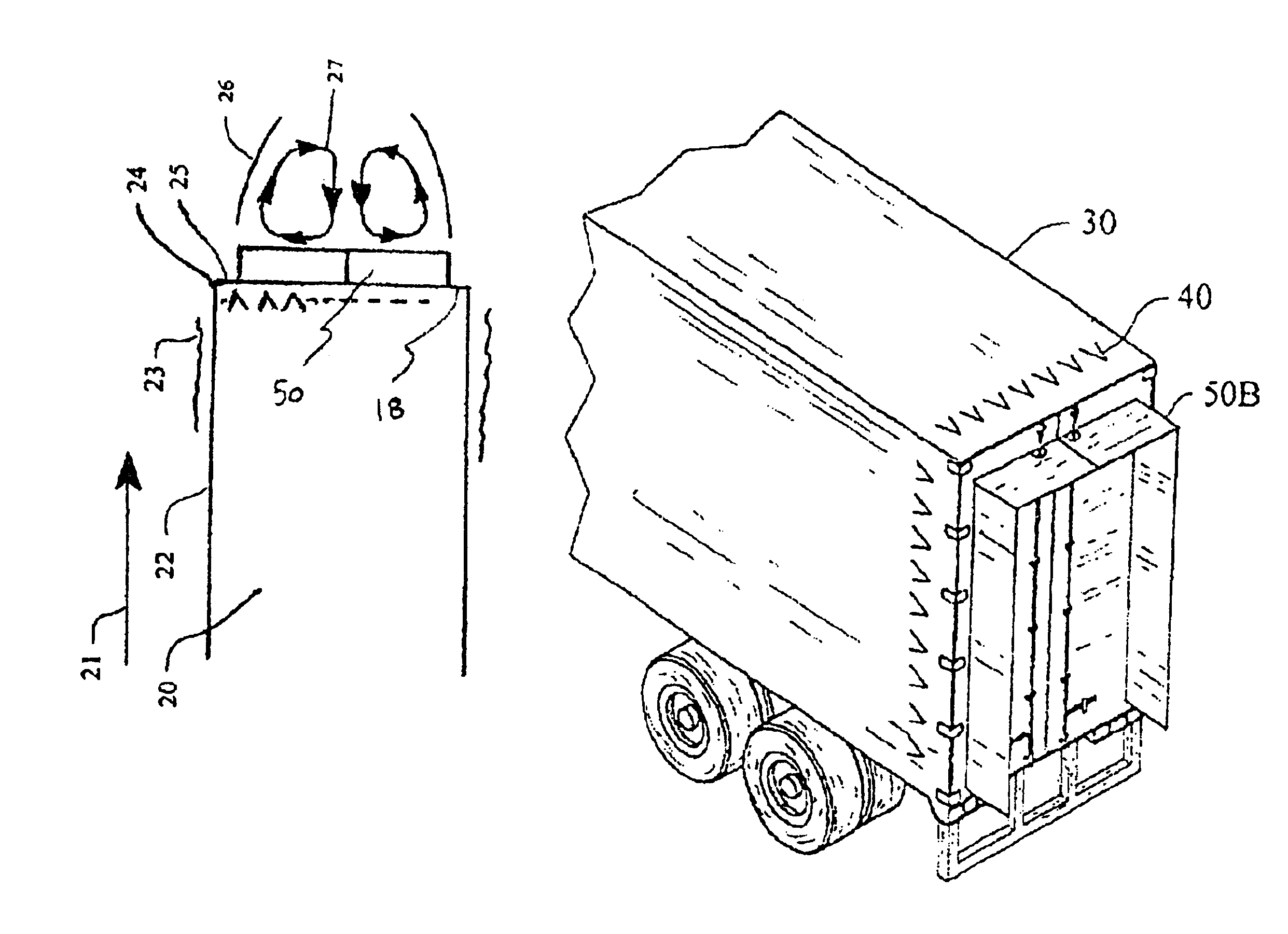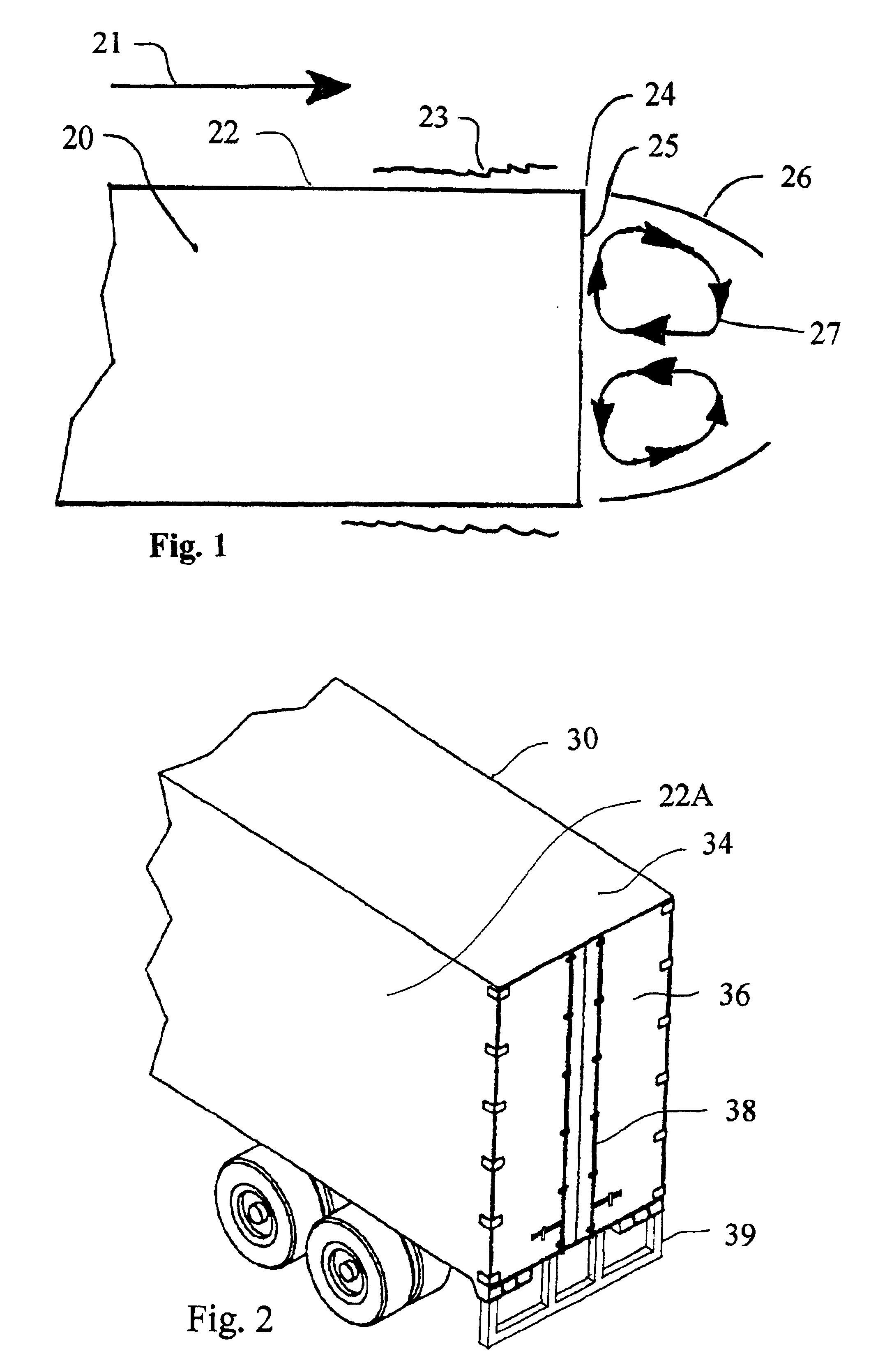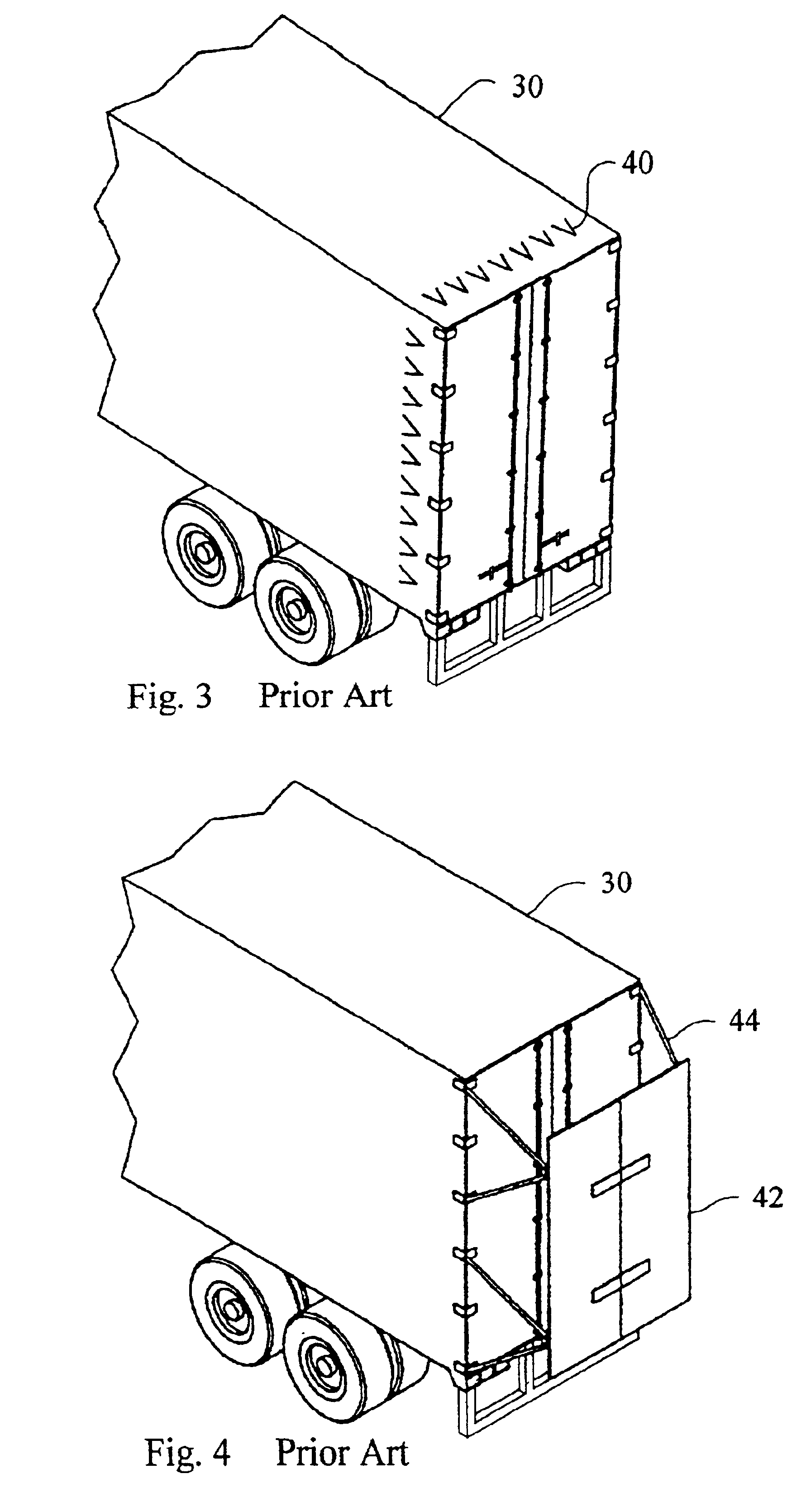Aerodynamic combination for improved base drag reduction
a technology of aerodynamics and base drag reduction, which is applied in the direction of roofs, transportation and packaging, vehicle arrangements, etc., can solve the problems of base drag, reverse is not true, and base drag at the rear of the body, and achieve the effect of reducing base drag, reducing base drag, and maximising base drag savings
- Summary
- Abstract
- Description
- Claims
- Application Information
AI Technical Summary
Benefits of technology
Problems solved by technology
Method used
Image
Examples
first embodiment
[0105]In the first embodiment of the invention, vortex generators are used in combination with a trailing panel, to provide greater base drag reduction than either method when used alone, while reducing the required mounting distance for the trailing panel by over two thirds.
[0106]When used in this combination, the vortex generators are mounted and used in the same manner as when they are used alone, without a trailing panel. The size and mounting distance for the trailing panel can be expressed as non-dimensional ratios, based on the width or height of the base surface, whichever is less, and the trailing panel is centered on the base surface. For a bluff body where width is less then height, the preferred width of the trailing panel is roughly ¾ of the width of the bluff body, leaving a border of ⅛ the width of the bluff body. The same border width of ⅛ the width of the bluff body, can then be used at the top and bottom edges of the trailing panel. For typical applications, the mo...
second embodiment
[0116]In a second and preferred embodiment of the present invention, vortex generators are used in combination with boattail plates, to provide greater base drag reduction than either method when used alone, while reducing the optimum length of the boattail plates by over half. This second embodiment of the present invention is expected to work well behind all bluff bodies having a substantially flat base surface, substantially normal to the direction of travel. Reduced length boattail plates, built and used in accordance with this second embodiment of the present invention, will henceforth be called shortened boattail plates.
[0117]This second embodiment of the present invention, using vortex generators and shortened boattail plates, provides base drag savings roughly equal to the first embodiment using trailing panels, while being far less sensitive to plate length and mounting positions. Also, this combination of vortex generators and shortened boattail plates is less sensitive to...
PUM
 Login to View More
Login to View More Abstract
Description
Claims
Application Information
 Login to View More
Login to View More - R&D
- Intellectual Property
- Life Sciences
- Materials
- Tech Scout
- Unparalleled Data Quality
- Higher Quality Content
- 60% Fewer Hallucinations
Browse by: Latest US Patents, China's latest patents, Technical Efficacy Thesaurus, Application Domain, Technology Topic, Popular Technical Reports.
© 2025 PatSnap. All rights reserved.Legal|Privacy policy|Modern Slavery Act Transparency Statement|Sitemap|About US| Contact US: help@patsnap.com



